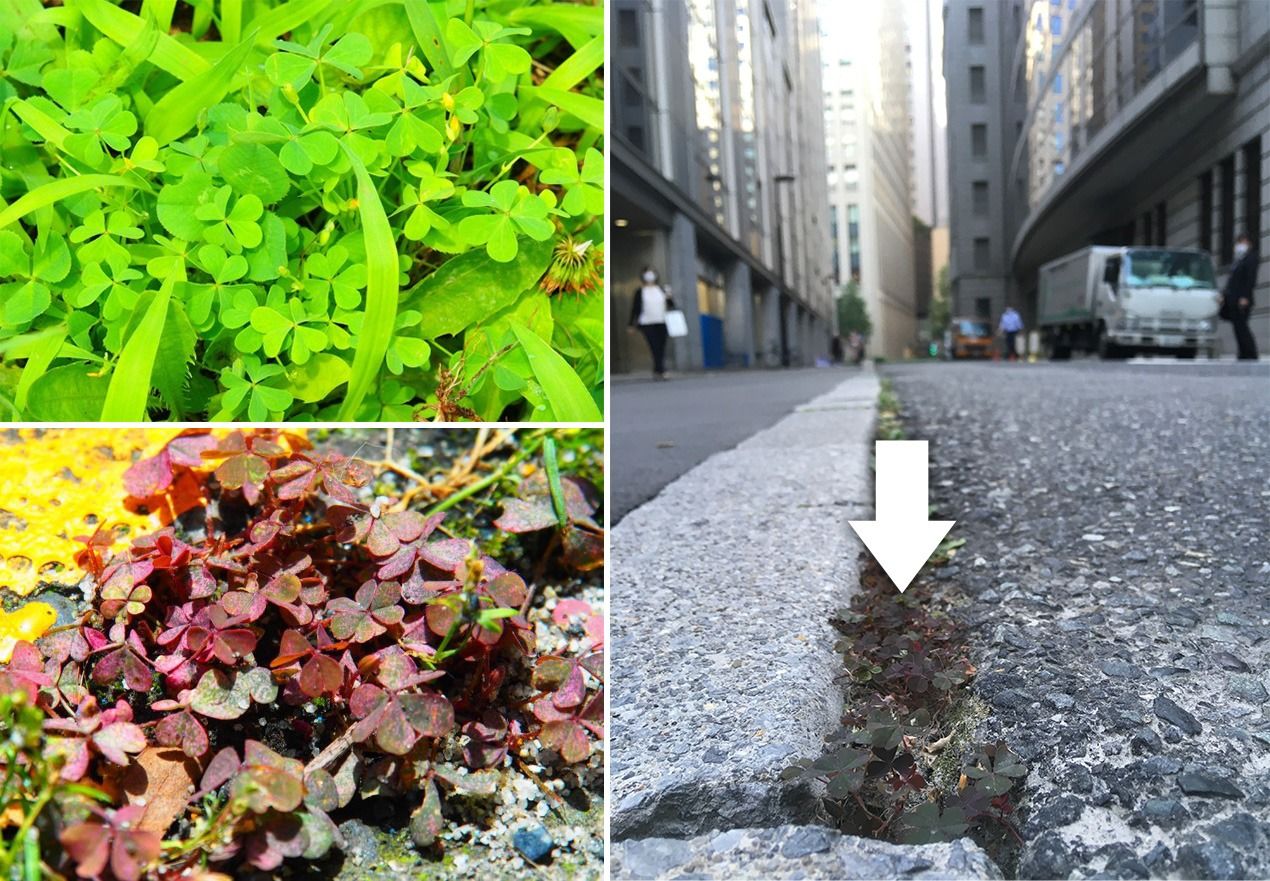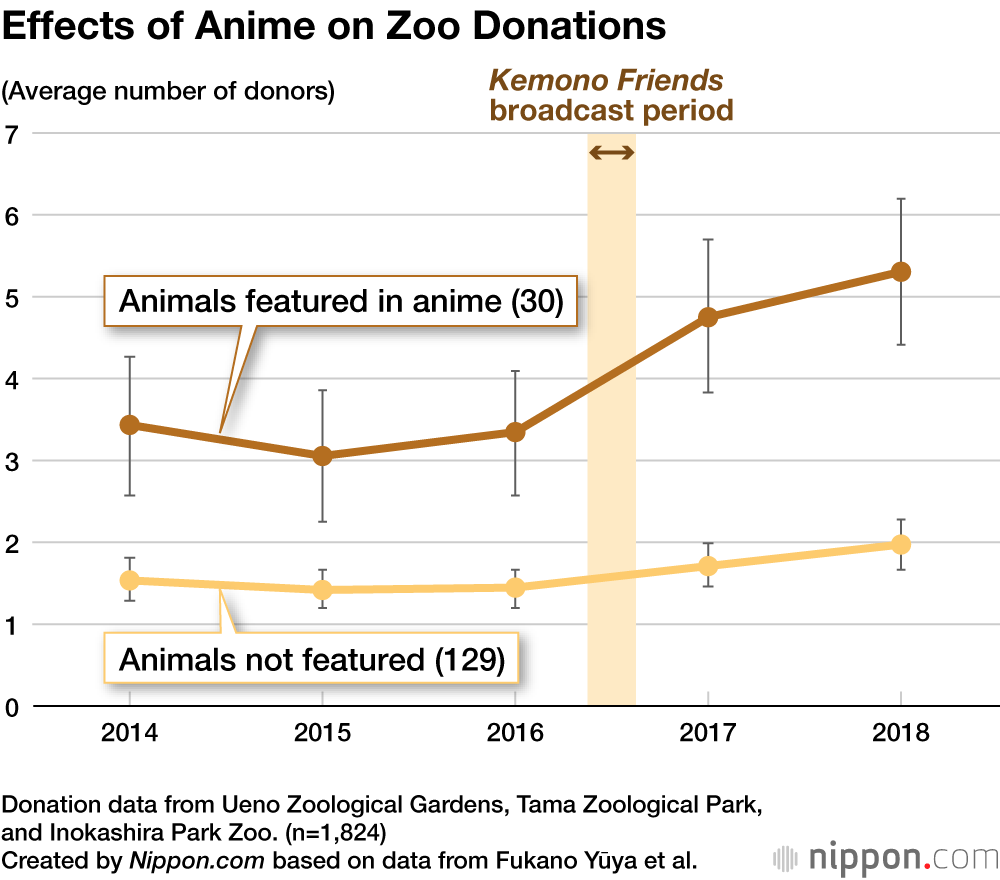The need to preserve biodiversity is well recognized, but human preferences for certain species can inadvertently tip ecological scales. Chiba University’s Fukano Yūya looks at the interactions between humans and the natural world from the standpoint of evolutionary psychology, providing new viewpoints for thinking about environmental problems.
Heat-Island Oases
Urbanization has left an indelible mark on the planet, altering landscapes across large swaths of the globe. As the atmosphere warms, the prevalence of heat-retaining materials like asphalt, stone, and metal create sweltering urban heat islands, imposing severe pressures on the flora and fauna that inhabit cities.
Ecologist Fukano Yūya of Chiba University points out that most research into the effects of heat stress on wildlife in urban environments has focused on animals. Concentrating his attention on plant life, he led a multi-institutional team that investigated the dispersion of Oxalis corniculata, a low-growing plant known by the common name creeping woodsorrel.
The pervasive species thrives both in parks as well as the cracks in roads and sidewalks. Depending on environmental conditions, plants can have either green or red leaves. Fukano observed that the former is dominant in green spaces, while the latter is found only near impervious surfaces like asphalt walkways that trap heat. He and his colleagues set out to explore why.

Counterclockwise from top left: creeping woodsorrel with green leaves; red-tinted leaves; and plants growing in a crack in a road in Tokyo’s Marunouchi area. (© Fukano Yūya)
The team examined online images of the plant growing in different locations around the world and was able to demonstrate a link between urbanization and the leaf color of creeping woodsorrel. They studied whether the different variations represented an adaptive trait and found that red-leaved specimens performed better under heat stress, while their green-leaved compatriots did better in non-stressful conditions—the world’s first discovery of a species adapted to urban heat islands. They published their results in the journal Science Advances in 2023.
While woodsorrel is an interesting case in adaptability, most wildlife is not so resilient. Climate change has already pushed many species to extinction, with countless more expected to disappear as the planet continues to warm. Fukano sounds the alarm over this loss, warning that as so little is known about the intricate workings of ecosystems there is no way to predict how the loss of even one species will affect the precarious balance of nature. “We’re all aboard this spacecraft called earth,” he declares. “But without understanding the multitude of mechanisms that power it, how can we right the vessel when things start to get out of whack?”
Drawing Attention to Biodiversity
Many cities have embraced urban oases as part of revitalization plans, building gardens, parks, and other green spaces to beautify drab concrete landscapes and provide residents with natural environments to enjoy. Fukano, however, points out that such spaces are carefully tailored by human hands, limiting the diversity of flora and fauna. Grassy areas, for instance, are a popular type of urban greenery that, while great for picnics and relaxing, are simple ecosystems made up of a limited number of specially selected species. Fukano has explored the impact of such favoritism, focusing his research on the ways human psychology affects biodiversity.
Looking at conservation efforts, he says that there is a tendency for people to give so-called lovable animals—pandas for instance—preference over less-captivating creatures, a bias that leaves many endangered species to fend for themselves. “Favoritism can tip the scale one way or the other for biodiversity,” he declares. He stresses the risk of picking favorites, describing how a “hated” insect allowed to go extinct might turn out to be the sole pollinator of a beloved plant variety, with their symbiotic relationship condemning both to the same fate. Making matters worse is the impact of implicit bias, which makes it difficult for humans to recognize how our self-interests sway our decisions.
A perfect example of this is Japanese attitudes toward climate change. While public awareness of the issue continues to rise, a global survey by French-based polling company Ipsos shows that few individuals in Japan actually feel motivated to take action themselves. Fukano and his team uncovered a hint for reversing this trend—anime. Specifically, they looked at the influence on people’s actions of Kemono Friends, a game and anime franchise that imagined a zoo with animals anthropomorphized into adorable girls.

The 2017 anime, which featured threatened species and other animals, was a massive hit in Japan. Fukano’s team analyzed changes in donation amounts at three zoos in Tokyo and found a notable increase in money earmarked for 30 animals featured in the anime, compared to donations for 129 not featured in the show. Fukano says the findings reveal the untapped potential of subculture genres like anime to bolster support for conservation efforts. “Cultural and educational facilities like museums tend to rely on established approaches—documentary programs and the like—to attract public interest to their causes,” he explains. “Our research shows that subculture genres such as anime can play a pivotal role as well.”

A poster featuring characters from Kemono Friends. (© KFP)
The Solar Conundrum
Another environmental trend that has unintended consequences for biodiversity is the proliferation of large-scale solar farms. These sprawling emplacements typically involve the removal of vegetation and laying of large amounts of concrete that severely damage existing ecosystems. Fukano and his colleagues have teamed up with the realtor Tōkyū Fudōsan and the Ministry of the Environment to explore ways to limit the footprint of these large facilities.
Fukano says changing management approaches to promote biodiversity would benefit big solar facilities by improving efficiency while preserving surrounding ecosystems. For instance, solar panels are affected by high temperatures, resulting in reduced power production when the mercury rises in summer. But Fukano explains that rather than clearing vegetation or paving over land as is common, creating plant-rich ecosystems similar to grasslands or wetlands would have a cooling effect, increasing the efficiency of arrays. Groundcover would also slow runoff from rain, helping reduce the risk of flooding and other disasters.
Action on the Individual Level
Looking across the Pacific, Fukano says he is concerned with the turmoil at many US universities in the face of slashed public funding for research. “Ideally, support for basic research would continue uninterrupted regardless of which party is in power,” he says. While refraining from speculating on the underlying cause of the growing partisan divide in the United States, he finds it notable that many of the institutions targeted by conservatives are so-called elite universities.
Fukano wonders if the animosity stems from the neglect of schools to foster open relationships with the public. He stresses that losing the trust of the wider community is a risk that Japanese schools also face. “Universities must keep their status in society in mind,” he says. “They must promote strong relations with the public and give back to the communities that host them.” He holds up outreach programs as an example, touting them as great ways for institutes to educate students and the public about ongoing research while inspiring the next generation of scientists and scholars.
Fukano has focused much of his attention on areas, such as woodsorrel and anime, that people can easily relate to. With regard to what individuals can do to preserve biodiversity, he paraphrases the French ecologist Anne Larigauderie, who in accepting the 2024 Blue Planet Prize for the Intergovernmental Science-Policy Platform on Biodiversity and Ecosystem Services called on individuals to move toward more sustainable diets and to choose leaders who promote policies to protect the planet.
In terms of food, Fukano says that the rise in beef consumption has had a major impact on biodiversity. Japanese cattle are fed soybeans imported from Brazil, much of which is grown on land reclaimed from the Amazon rainforest. Even by consuming Japanese beef, then, people are contributing to deforestation and the loss of irreplaceable habitat halfway around the globe.
Even something as mundane as our daily eating habits connects us with environmental issues. Recognizing the relationship between our lives and biodiversity raises awareness of the impact of our choices, paving the way to adjust our behaviors and switch to alternative forms of food, such as meat substitutes, that place less burden on the environment. “The accumulation of small choices leads to major changes,” Fukano declares. “As an ecology researcher, I want to motivate people to take action by revealing the hidden workings of our environment.”
(Originally published in Japanese. Banner photo: Fukano Yūya at the botanical garden at Chiba University’s Matsudo Campus. © Shime, Inc.)


AloJapan.com